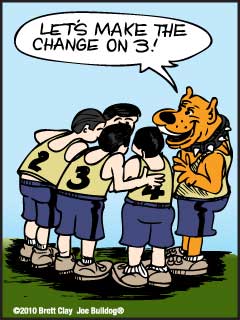Change Leadership — Secret # 87
Develop Your Change Team
It is amazing what you can accomplish if
you do not care who gets the credit.
—Harry S. Truman
What I Need to Know |
In traditional solution-oriented selling, there is the concept of a sponsor. The sponsor is someone who believes your solution is the best and proactively helps you sell your solution to the company. The sponsor is essentially an internal salesperson for you. Having a sponsor is critically important for winning the business. You cannot win without one. The same is true for change leadership. You need one or more people who believe you can help the organization and are willing to help you succeed.
Traditional sales methods also talk about “calling high,” “selling to power,” identifying supporters versus enemies and the roles of various people on the buying committee (e.g., evaluator, recommender, decision maker, and approver). Calling high early in the sales cycle may work in simpler solution-oriented sales.
However, change-centric selling can involve much higher value and more complex initiatives that cross organizational boundaries. So change leadership involves a new vocabulary of terms such as stakeholders (instead of buying committee), internal change agent (instead of sponsor), and resource owners (instead of decision makers) to name a few examples.
Ultimately, you need to assemble a “change team” comprised of people who not only are now experiencing the forces of change, but who will later actuate the changes.
What I Need to Do |
Recruit the following roles to your change team:
Business owner. The person responsible for achieving the revenue, cost, and mission goals of the organization. This person has the most strategic mindset and can set the vision for change.
Internal change agent. The person who wants to see you succeed and will obtain the authorization of the business owner to drive a change in the business.
Resource owners. The person(s) who controls resources either affected by the change or required to make the change. The success of the change project depends on the cooperation and execution of these resources.
Resistance leader. The person who is the voice of the resisting forces.
Stakeholder leaders. The person(s) who represents the various stakeholder groups who will be affected by the proposed change.
Action Summary |
|
 |



Social